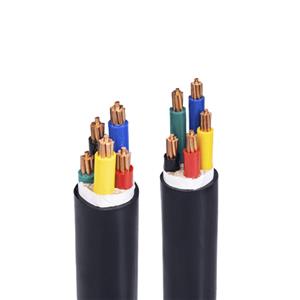Reasons for the price difference of aluminum alloy cables
In the cable market, the price difference of aluminum alloy cables is large, which has aroused the curiosity of many users. The prices of aluminum alloy cables of different brands and specifications vary greatly, some are relatively cheap, while others are relatively expensive. This price difference has caused trouble for users when purchasing aluminum alloy cables. What exactly causes such a large difference in the price of aluminum alloy cables? Generally speaking, it can be divided into the following factors.
(I) Conductor material factors
Aluminum alloy cable conductors are made of aluminum alloy. Compared with ordinary aluminum core cables, the manufacturing cost of aluminum alloy is higher. High-quality aluminum alloy materials are much more expensive than pure aluminum materials, and their performance is also better. For example, in terms of conductivity and mechanical properties, aluminum alloy cables usually have better performance and can meet some special requirements. This is also one of the main factors leading to the price difference of aluminum alloy cables.

(II) Production process factors
The production process of aluminum alloy cables is relatively complex and requires a higher level of technology and equipment. Compared with ordinary cables, the production process of aluminum alloy cables requires multiple processes such as special pressing process and annealing treatment. This also makes the production cost of aluminum alloy cables relatively high, which affects the price.
Therefore, when purchasing aluminum alloy cables, we can consider the following aspects: 1. Before purchasing aluminum alloy cables, we must first be clear about our needs, including the purpose of the cable, the laying environment, and the electrical performance requirements. 2. Select the conductor size according to the actual current load to ensure that it can meet the electrical performance requirements of the system. Conductor size is a very important indicator in the technical parameters of aluminum alloy cables. Generally, the larger the cross-sectional area of the conductor, the stronger the conductivity. However, when selecting, factors such as the clear distance between cables should also be considered to avoid reducing the correction factor due to increasing the cross-sectional area and affecting the current carrying capacity. 3. If used in a high temperature environment, it is necessary to select an aluminum alloy cable with good heat resistance to ensure its stable operation under high temperature conditions. You can refer to the thermal stability related indicators of aluminum alloy cables, such as high temperature conductivity, thermal expansion coefficient adaptability, and high temperature aging resistance. 4. On the premise of ensuring quality, you can compare the prices of different brands and suppliers and choose aluminum alloy cables with higher cost performance.

In summary, the price difference of aluminum alloy cables is mainly due to factors such as conductor materials and production processes. When purchasing aluminum alloy cables, we need to consider various factors comprehensively to choose products that suit our needs. In actual purchase, we must first clarify our needs, including purpose, laying environment and electrical performance requirements. Choose the appropriate conductor size according to the actual current load, and pay attention to the heat resistance of the cable. If you are not sure how to choose, you can consult a professional for advice. In short, you need to be cautious when purchasing aluminum alloy cables and consider various factors comprehensively to choose a satisfactory product.




